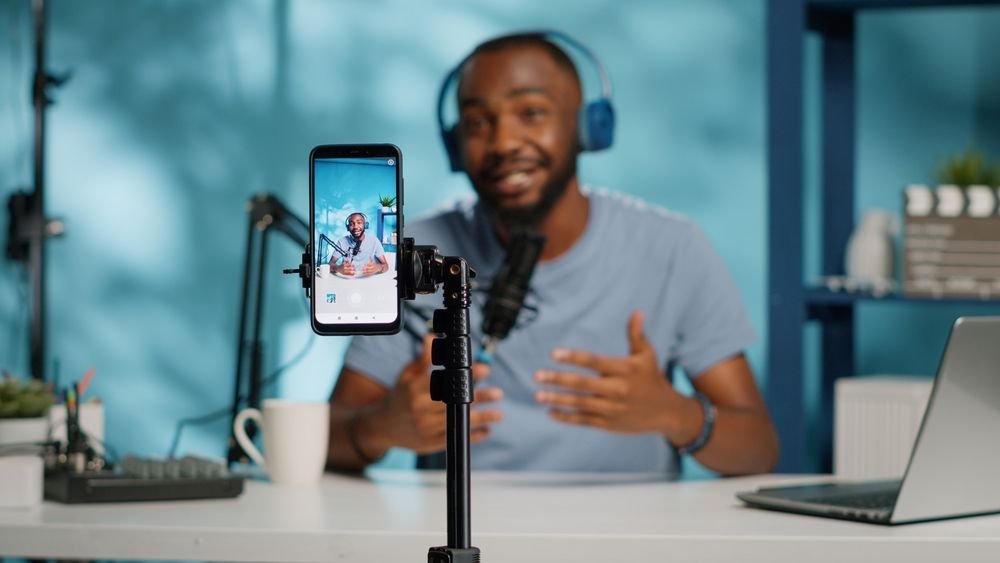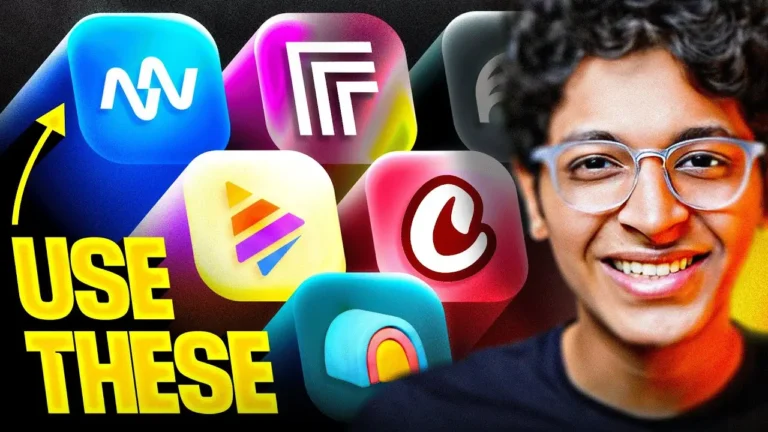
Content Creators Work
In the world of digital creation, the rise of AI is rewriting how content is produced, edited, and distributed. Whether you’re a solo creator, marketer, educator, or social media manager, leveraging smart tools can dramatically reduce time, diminish friction, and elevate the quality of your output. Below are 7 AI tools changing the game — making tedious editing, scripting, design, and production tasks much more seamless. We begin with a powerhouse platform: Invideo.
1. Invideo
Invideo has increasingly become a go-to for creators who want to move from idea to polished video without mastering complex editing suites. One of its standout features is acting as an ai short video generator—you feed in a prompt or script and the system generates a short video complete with scenes, voiceovers, visuals, transitions, and subtitles. The “Magic Box” editing feature then lets you tweak or replace scenes simply by typing instructions. Invideo’s integration with OpenAI models (GPT-4.1, gpt-image, TTS) lets it analyze your prompt and orchestrate not just visuals but pacing, narration, and narrative flow.
In 2025, Invideo is pushing further. It announced a strategic partnership with Google Cloud to scale its AI generation capabilities and accelerate rendering, template sets, and backend inference. Its mobile presence is evolving too: the ai generated video app version on Android and iOS supports creating, editing, and managing video projects on the go. The app includes prompt-based video creation, script generation, avatar features, and voiceover tools. With version 4.0, users can even “clone” avatars (AI twins) and deploy them in videos, expanding use cases for training, social media, or personalized content.
2. Descript / Overdub / Video Editing AI
Descript blends transcript editing, screen recording, and audio/video edits. Its Overdub voice cloning can reproduce your voice for voiceovers, and you can cut, move, or eliminate sections by editing the transcript. Its video features, filler word removal, and multitrack timeline make it ideal for podcast-turned-video workflows.
3. Runway (Gen-2 / Gen-3)
Runway’s generative video models allow creators to produce short video clips from text or images. For instance, its Gen-2 model supports combining input prompts with reference video styles, making it useful for concept visuals, b-roll, or creative segments. Because it focuses heavily on generative media, it’s well suited for background visuals in longer content.
4. Pika Labs
Pika Labs is gaining traction for its intuitive interface that turns text prompts into dynamic video sequences. It simplifies motion, camera perspective, and transitions, enabling creators to sketch out scenes or even produce stylized content rapidly without needing granular timeline work.
5. Synthesia
Synthesia is tailored for talking-head videos via avatars. You can generate videos with a digital presenter who lip-syncs your script, with multilingual support, various voices, and avatar realism. It’s particularly useful for explainer videos, training, and corporate content where a human face (real or synthetic) is valuable.
6. Fliki
Fliki combines text-to-voice, media libraries, and avatar-style narration. You input text or a script, and Fliki transforms it into a video with visuals and AI voices, often leveraging avatar personas or automated scene selection. It’s friendly for social media creators who want a fast, multi-language content workflow.
7. Canva AI / Magic Studio
Canva has evolved from static graphics into supporting AI-enhanced video content as well. Its Magic Studio and video tools let you auto-generate layouts, punchy animations, and transitions. While not as specialized in video as the others, Canva’s ecosystem (graphics, templates, assets) makes it a useful hub for hybrid content workflows.
How These Tools Are Reshaping Creator Workflows
- From blank canvas to storyboard in minutes
Before AI, creators would spend hours drafting outlines, researching visuals, and stitching assets. Now, tools like Invideo, Runway, Pika, and Synthesia let you plug in a concept or text and receive a structured storyboard/video draft as a starting point. - Simplified editing via natural language
The Magic Box in Invideo is a prime example — commands like “cut scene 2,” “change accent to British English,” or “insert overlay” apply directly without dragging clips or fiddling with keyframes. Other platforms are adopting similar “edit with words” paradigms. - Media sourcing and consistency built-in
These AI tools often bundle or integrate large stock photo/video/audio libraries, automatically selecting media for your scenes based on your script and style preferences—no hunting around manually. - Scale and iteration speed
Because changes are fast (text tweaks, re-render, export), creators can quickly test variants, A/B versions, or repurpose scripts across formats (shorts, long format, slides, social posts). This accelerates experimentation and feedback loops. - Democratization of pro-level content
You no longer need deep technical skills, studios, or large teams to produce polished content. These AI tools lower the entry barrier, allowing individual creators or small teams to punch above their weight.
Tips for Choosing & Using the Right AI Tool
- Match your content format: If your work is heavily persona-driven or training-based, tools like Synthesia or Invideo’s avatar options might suit you. For ambient or background visuals, Runway or Pika may be better choices.
- Start simple, then customize: Use AI to generate a draft and then layer your brand tones, narrative tweaks, or personal flourishes. Avoid over-editing in early stages.
- Mind performance limits: Many platforms allocate monthly “video minutes” or credits (Invideo does so in its pricing tiers). Choose a plan aligned with your output.
- Monitor AI quality drift: As AI evolves, outputs can vary. Always proof for coherence, timing, and brand alignment.
- Use multi-output strategies: Generate multiple versions (short, mid, long) from the same prompt. These tools often allow resizing and repurposing across platforms.
- Combine tools where it makes sense: You might generate a visual background in Runway, voiceover in Descript, and finalize assembly in Invideo. Hybrid workflows often yield richer results.
AI tools like Invideo and the others listed above are not just trend pieces—they represent a shift in how creators conceptualize and build content. We’re moving from manual, frame-by-frame labor to assisted intuition, where the tool becomes a creative partner. For any creator looking to scale output, iterate faster, and maintain visual quality across channels, mastering these AI platforms is becoming essential.


